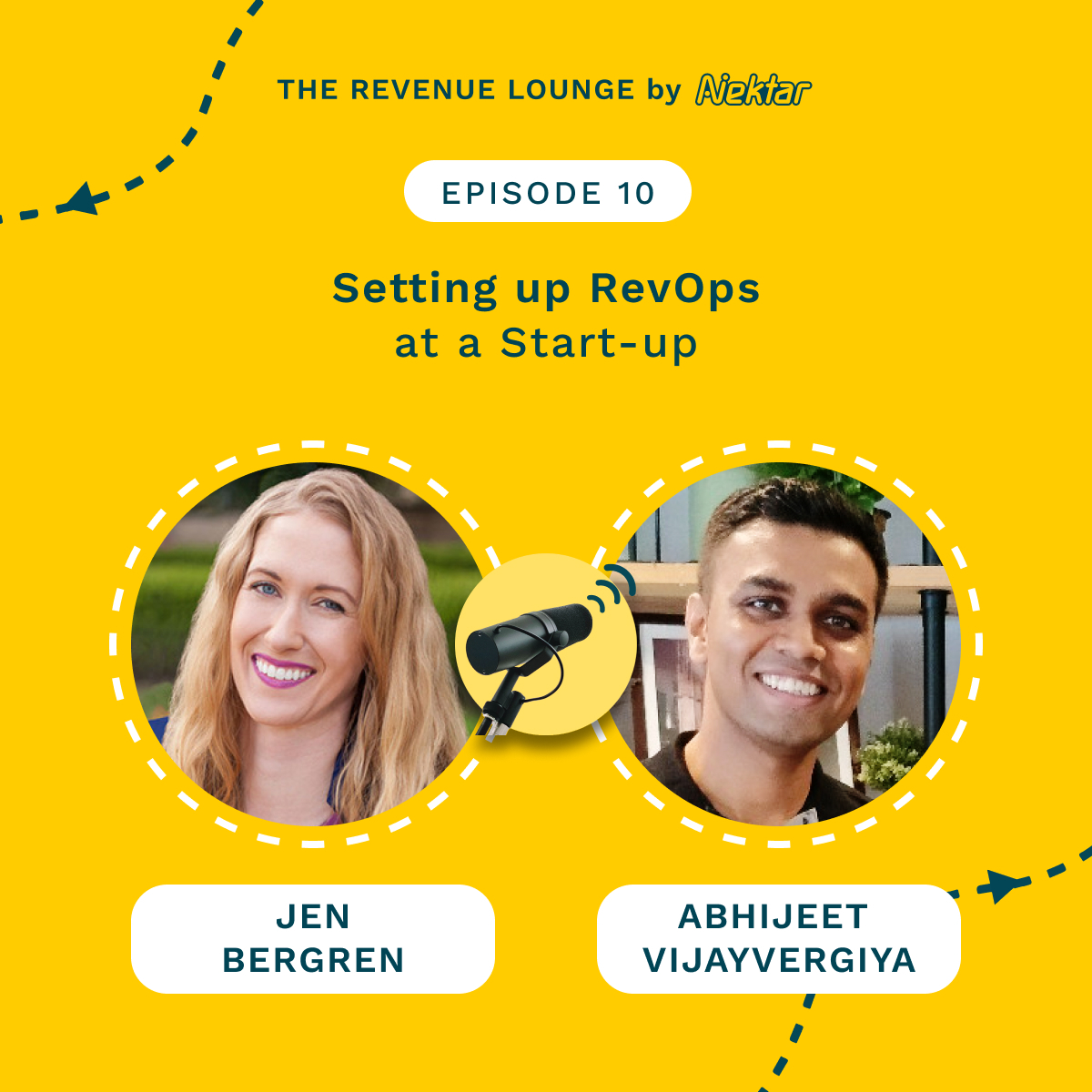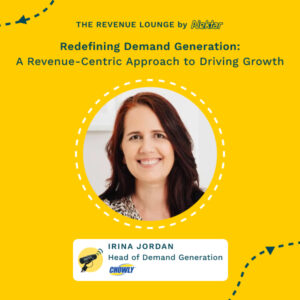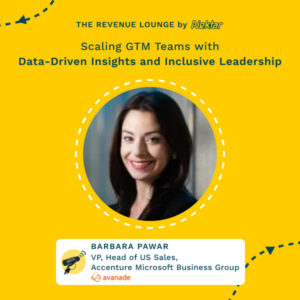How to Retain and Expand Customers with the Self-Serve Motion ft. Navneet Loiwal
April 17, 2024
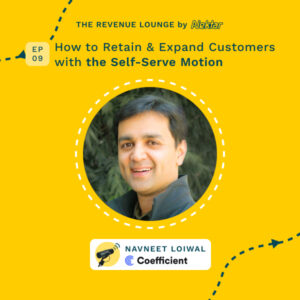
About
The Revenue Lounge
The podcast covers stories from leaders across RevOps, Sales, Customer Success, GTM, Data and Marketing about what drives these functions and what advice they would share with our listeners. With 3 seasons recorded, the podcast currently features 50+ enterprise leaders in the B2B SaaS domain. Tune in to hear from the best in the business
In this episode of the Revenue Lounge podcast, host Randy Likas interviews Navneet Loiwal, co-founder and CEO of Coefficient, about scaling customer success through a self-serve model. They discuss how Coefficient is using automation and data connectivity to empower spreadsheet users and provide them with live data in their spreadsheets.
Main Discussion Points:
– How Coefficient takes the work people already do in spreadsheets and adds automation and data connectivity to make them more powerful (00:01:30)
– Balancing building what customers ask for vs. your own product vision as a startup (00:09:04)
– Using product usage signals to identify high-risk customers and decide who to proactively reach out to (00:06:07)
– The importance of building human trust and connection in a self-serve model, especially in early days when you have 1,000+ customers (00:13:49)
– Striking a balance between listening to customers and reading between the lines to understand their real needs (00:09:52)
Guest Bios:
Randy Likas: Host of the Revenue Lounge podcast
Navneet Loiwal: Co-founder and CEO of Coefficient, a company that connects live data to spreadsheets. Formerly led product teams at Google.
Company Bios:
Coefficient: Y Combinator-backed startup that builds automation and data connectivity into spreadsheets, making them more powerful for analysis, reporting and dashboards. Powers spreadsheets with live data.
Key Quotes:
“The smartness of a product team is to, yes, listen to everybody. The customer is the one you have to listen to very closely.” (00:09:28)
“Understand which parts, that you’re doing, you know, in your company, in your job, in your start up that are unique to you and which parts are not.” (00:18:30)
“If it’s not viable, if it was too minimal, you will test it out, and it will not work because it was not even viable. So always remember that it has to be minimal but still viable.” (00:21:07)

[00:00:06] Randy Likas: Hello, everyone. Welcome to another episode of the revenue lounge podcast. I am your host, Randy Lykkes. And today, we have the privilege of speaking with a leading expert in the field of customer success. We’ll be driving deep into the world of customer retention and expansion, specifically through the lens of a self-service motion.
[00:00:22] Randy Likas: Our guest today is Navneet Lowell, the cofounder and CEO of Coefficient. We’re going to dive deep into the world of customer success and explore how Coefficient has been successfully retaining and expanding customer relationships through the self serve motion. Hi, Navneet. Thank you for so much for joining us today.
[00:00:38] Navneet Loiwal: Hi, Randy. Pleasure to be here.
[00:00:41] Randy Likas: So let let’s start. Tell me a little bit about Coefficient. What what do y’all do, and and what problems are you solving for your customers?
00:00:47 Navneet Loiwal on Coefficient and Being a Builder in the Tech Industry
[00:00:47] Navneet Loiwal: Yeah. Coefficient switch is very generally applicable. So a lot of your listeners will associate with it. The whole runs on spreadsheets. We are all using spreadsheets every day to do a lot of your reporting and analytics and dashboarding.
[00:01:00] Navneet Loiwal: And what our, vision, our mission is to make these spreadsheets that we use come alive with live data coming from your source systems. Like, you could be using your game site or your DBs that have customer information. Get that data live into your spreadsheet. So the analytics, the dashboarding that you do, it can feel like it’s a always on automated dashboard, all built by a business user with their spreadsheet skills in the spreadsheet of choice, Google Sheets or Excel. So, again, the idea is very straightforward.
[00:01:30] Navneet Loiwal: Take the work you do in your spreadsheets and add automation and data connectivity to it.
[00:01:37] Randy Likas: Fantastic. So is is the users of of the application from all areas of the business, or is one particular function tend to be more of a a business user of yours than another?
[00:01:46] Navneet Loiwal: Yeah. So today, in theory, everybody should be a user. But as we are a startup, we are about 3 years into this journey. So we are focused on the areas closer to sales. So managing your sales pipelines, managing your customer KPIs, and, in fact, a little bit of customer success.
[00:02:03] Navneet Loiwal: We internally use coefficients to pipe our customer metrics and have a customer score built all inside spreadsheets with live data.
[00:02:12] Randy Likas: Fascinating. One of the things as I was looking at your background is for the past 20 years, you’ve been a builder. Right? Whether it was when you were at Google working with building products that didn’t exist before all the way through to cofounding some of your companies over the past 20 years. I’m sure your roles evolved quite a bit, right, from when you’ve started the company a couple of years ago.
[00:02:30] Randy Likas: Tell me about your role, you know, now. What’s the journey been like, and how’s it evolved from early founding to where you are today?
[00:02:37] Navneet Loiwal: Yeah. So I am the founder and CEO of Coefficient, and, this is, you know, the second startup I have founded with my cofounder. For me, it’s been a long journey from being an engineer to now being a product builder and a founder and CEO. So it’s a long journey that has happened one step at a time, and the common thread has been being a builder, as you said. Right?
00:02:59 Building a Delightful Experience for Business Users with Self-Serve Motion
[00:02:59] Navneet Loiwal: I I can recall now the my favorite projects as an engineer were also the ones which were open ended, and you had you were building for an end user. And that’s what I’ve been doing. My first startup was a pure consumer startup, which is you’re only building for the end user. And now, if you will, I’m both building for that business user. So it’s building a delightful experience for the business users.
[00:03:19] Navneet Loiwal: And we would love to make those business users, the sales operations and marketing operations people. We want to make them builders in their own right by leveraging their spreadsheet skills, but us adding those missing pieces of automation and data connectivity. So that your spreadsheet, which works like a glorified calculator today. Right? That’s how we use it.
[00:03:38] Navneet Loiwal: That can feel like a programming environment.
[00:03:41] Randy Likas: So let’s let’s dig dig into that a little bit more. So can you explain, like, in in the self-service motion, in the context of customer success, how does that differ from, like, the traditional customer management approaches?
[00:03:52] Navneet Loiwal: Yeah. So the key part of a self serve motion is that we have thousands of users and customers. Right? We are already at a point where we have thousands of companies who have used and are powering their spreadsheets with coefficient. So that means the traditional customer success approach of, like, you pair 1 customer success person or an AE with 50 accounts, that does not work because we are talking about 1,000 right here in the early days.
00:04:18 Scaling Customer Success in a Product Led Growth Environment
[00:04:18] Navneet Loiwal: So the key thing for us is doing customer success at scale. Now the interesting part is there are no blueprints readily available out there. So we are learning from some of the attempts that, you know, it’s not that we are the 1st self serve company. So there is some, know how out there. We are learning from that, and we have to come down to first principles to see how do you scale that customer service, both the customer support part and the customer, success parts to thousands with having only 1 or 2 resources.
[00:04:50] Navneet Loiwal: So what does it take? And I think one of the key parts is that you have to become proactive. You can clearly not do a quarterly meeting with every one of your thousands of customers. Right? So what is the next best thing?
[00:05:02] Navneet Loiwal: Could you proactively reach out to people at the right time? Now this is all fuzzy, defining what the right time is dependent on your business. But the cool part is, firstly, neither the person who who is using you self serve. They are not expecting a quarterly check-in. So the expectations of the user and customer are different.
[00:05:18] Navneet Loiwal: And similarly, from our side, we are not looking to do a check-in with every one of those 1,000. So identifying with product signals which ones are the ones worth spending 1 on 1 time with and which are the right times to do that. For instance, it could be a big company, but they may be using the product fine and, like, making like, expanding the product all by themselves. Then you do not need to reach out to them. Right?
[00:05:42] Navneet Loiwal: So finding those areas where either there is a risk, as you see in your product metrics, that there is a risk. You spot somewhere, reach out to those people. Or if you believe that they have not used certain parts of the product which you can sense from their usage would be great for them to know about, and you proactively reach out to them with a clear agenda of showing them that part of the product which they have not yet used. So it is it becomes very proactive first.
[00:06:07] Randy Likas: Yeah. And and how has that changed from maybe what how things were a year, 2 years ago? Yeah. What what’s been different about this market that that you’ve seen in success?
[00:06:17] Navneet Loiwal: Yeah. So I think there is just more people talking about this as the word PLG, product led growth, which is the newer word for, like, self-service, products. Right? As a word Yep. Has taken a lot of shape.
[00:06:30] Navneet Loiwal: A lot of companies are trying to figure out their PLG motions, product led motions. In fact, many enterprise companies are trying to see, oh, how could I have a self serve motion of myself? So what has changed is a a much bigger awareness of figuring out how your sales and customer success processes work when you are when you’re going product led.
00:06:50 Tracking Key Metrics at Coefficient for Customer Engagement
[00:06:50] Randy Likas: Yep. I I I like what you said earlier around, like, trying to look for the signal. Right? What does that need or that moment in which we need to engage with our customers? What are the key metrics that you measure and track to achieve this at Coefficient?
[00:07:03] Navneet Loiwal: Right. So at Coefficient, we do use Coefficient to track to pull a lot of these metrics. Some of them come from our CRM. We use HubSpot. Some come from our product analytics.
[00:07:13] Navneet Loiwal: We use Amplitude. And some come from our database where which has all the finest grained, you know, usage metrics of every user and customer. So we use Coefficient to pull data from all these three places into spreadsheets, and that’s where our business users can go to town with that using your vlookups and mashups, trying to line up different activity across different periods doing week on week, month on month, year on year measurements for every single customer. I like, now that I see their work in action, I don’t know what tool would have existed to allow us that flexibility to see things our way. Because I think this is my big learning that, you know, tools like Gainsight and and stuff out there.
00:07:52 Prioritizing Product Development for Customer Needs
[00:07:52] Navneet Loiwal: Yes. They are they are great. You can plug in some of these, sources, and they will give you out of the box metrics. But every business has unique ways in which you look at a customer’s activity, a customer’s success, a customer’s churn risk. And doing it in a spreadsheet where the raw data is now always live, it allows you the flexibility of doing x on y by z, which an existing tool may not have had, but that’s how you look at a business.
[00:08:16] Navneet Loiwal: So to us, looking at product usage, looking at trends over time, the short term trends in the last 4 weeks, and the longer term trends in the last 6 months of every account and customer have been extremely key in creating risk churn risk scores and health scores. And those are what allow us to power, prioritize our list of customers. We will also, from our CRM, pull in the size of a customer and so on. Right? So the size of a customer and the health score of a customer is how we get a prioritized list of who and when to go after.
[00:08:45] Randy Likas: I imagine as you’re growing and you’ve got more and more customers who are, you know, telling you about what their needs are, there’s only so many resources that you can apply. Like, you’ve got a product product road map. How do you prioritize that? Like, you’ve got a lot of different people that want a lot of different things. Yes.
[00:08:59] Randy Likas: What’s what’s the what’s the the formula for making sure that you’re developing your
[00:09:02] Navneet Loiwal: product for
[00:09:03] Randy Likas: for the mass, if you will?
00:09:04 Balancing Customer Feedback and Product Vision in Building Software Products
[00:09:04] Navneet Loiwal: Yes. I I wish there was a formula. This is the constant tension that you have in what you want to build and what the customer wants. Right?
[00:09:13] Navneet Loiwal: I’m always of the opinion. The customer is not building your product. So you have to listen to your customer, but then read between the lines and spot patterns. Like, the smartness of a product team is to, yes, listen to everybody. The customer is the one you have to listen to very closely.
[00:09:28] Navneet Loiwal: We in our early days, we have a dedicated person on staff who is doing user research calls every single week with multiple customers. Right? So we are very heavily listening to the customer, but then we don’t just blindly do what they’re asking for. We read between the lines because the customer will often tell you the problem that they have. It’s us, the product builders, who are to find what is the right solution which will satisfy the problem.
[00:09:52] Navneet Loiwal: Right? It’s not the customer who will design it for you. So the ability to strike that balance where we want to do the stuff to further our vision and at the same time, there are sometimes it’s just bugs that you just have to fix, right, that the users are telling you. You have to, like sometimes it’s as simple as putting a timebox. Like, we will spend on any given sprint, we will spend x percent, not more than 40% of our time doing directly what the customer has asked us for so that we can save that 60% for the stuff that we as the product team need to do.
[00:10:24] Navneet Loiwal: It’s hard because when you listen to customers every week, you tend to want to go do that stuff, which you which you just heard 2 days ago. You’re like, oh my god. This is a big problem for this big customer. And you have to have the discipline to be able to say no. We are running short of time because 60% of our efforts have to go in the long term product building.
[00:10:45] Randy Likas: Yep. It’s a constant reminds me of the famous Henry Ford Henry Ford quote. Right? You ask the users what they want, they’re gonna tell you they want a a faster horse. Right?
[00:10:52] Randy Likas: They they they can’t envision the car. Yeah.
00:10:56 Discussion on Removing Friction for Customers
[00:10:56] Navneet Loiwal: It is exactly that. But reading between the lines is to understand that the the user wants to go faster. They can only imagine a faster horse, but we are the product builders. We have to imagine that their need is to go fast and the car is the answer to it.
[00:11:11] Randy Likas: Yeah. Yeah. I I I think what you’re getting at is what is the friction, right, in which the customer is facing in achieving whatever their job to be done is. Right? And and then understanding how to remove that friction.
[00:11:21] Navneet Loiwal: Yeah. Yeah.
00:11:23 Challenges and Solutions in Implementing a Self-Serve Motion at Coefficient
[00:11:23] Randy Likas: So nurturing high value accounts is essential, and and I had a chance to take a look at at the website. You guys work with some really great brands. How do you actually go about removing those various points of friction that might exist, especially with your larger customers?
[00:11:35] Navneet Loiwal: Yeah. So for a self-service motion, again, this is another balance to strike when, you know, we have a few higher value accounts. Right? No surprise. And you have to you have to give more weightage to what they’re saying.
[00:11:48] Navneet Loiwal: Right? So we will use that in our prioritization. When one of our higher value accounts is is asking or is is hitting a roadblock, right, it definitely bumps that thing in our product roadmap. So there is that. On the other hand, in our particular case, the beauty that our work you know, our users work in the spreadsheets we have a a a team of product specialists, as we call them, who are spreadsheet ninjas.
[00:12:12] Navneet Loiwal: These people can go barrier bust for any customer issue often by working around our issues because you have the whole spreadsheet at your disposal. Right? So that has been a big blessing for us that if you have a problem, we may not have the perfect solution, but we could find workarounds in your spreadsheet by sending a spreadsheet ninja and spending 20 minutes with you and barrier busting. So that has worked out very good because the customers feel great about getting unblocked in the matter of minutes rather than waiting for 3 months for your product feature. Right?
[00:12:41] Navneet Loiwal: And that builds our trust with them, which is a very key part of the start up. You will screw up. Yeah. You need people to trust you and not just flip out on the first time you screwed up because you will.
[00:12:53] Randy Likas: Right. Absolutely. So can you share some insights on maybe some of the challenges that you faced in implementing the self serve motion? How’s Coefficient overcome some of those obstacles to to really make sure that you achieve the the the NRR numbers and the expansion goals that you that you have for the company?
00:13:10 Building Customer Trust Through Human Interaction
[00:13:10] Navneet Loiwal: Yeah. So I think the key part is building that human trust as well. So in a self serve product, you could easily say that, oh, the user has to come to the website. They have to sign up on their own, use the product on their own, and swipe a credit card and do the entire journey on their own. That is is right.
[00:13:26] Navneet Loiwal: That’s what a self serve product is. But do not underestimate the value of building that human connection and trust, especially in the earlier days. Over time, when we get to tens of thousands of customers, human touch can only scale so much. But in the early days, trying to find a version of customer success that works at the scale of 1,000 is a very key part. And we see this all the time.
[00:13:49] Navneet Loiwal: Our best customers who have expanded the most have had the deepest relationships with us. So that’s why we try to figure out signals that at which point did we touch the customers who have now been successful and try to replicate it almost as a blueprint with formulas in our spreadsheet to identify others who are reaching those points, and there we want to be proactive.
[00:14:12] Randy Likas: Yeah. What what you’re getting at, I think, is is interesting because it’s it’s going beyond just like the product usage, but you’re building relationships with your customers to truly understand what’s going to make their jobs easier and the relationship they have with those customers to help solve their problems.
[00:14:29] Navneet Loiwal: The relationship has been a very key part this year. It’s been hard for every company on the churn axis. Right? Everybody’s suffering from lower growth rates, higher churn, lower NRRs. And I think we have managed to stay ahead of the pack in a big, reason, that our bigger customers have had a human interaction with us, and they trust us.
00:14:49 Scaling Customer Success in Self-Serve PLG Companies
[00:14:49] Navneet Loiwal: So we have understood their problems more deeply than the fact that they are paying us x1000 a month. So we understand them more deeply, which allows us to build the right product. And at the same time, that human relation, that we have with them is what has kept our churn, like, under control.
[00:15:06] Randy Likas: Yep. Everybody’s been facing this churn issue. It’s just a matter of what where we’re living at right now. But let let’s pretend for a moment that time, resources, money weren’t an issue. Right?
[00:15:15] Randy Likas: What would you attack first? If if you had no limitations, what would you solve? Especially from the self serve war that we’ve been talking about today, what would you go south first?
[00:15:24] Navneet Loiwal: So I would love to scale the traditional customer success approach, which is very 1 on 1. I would love to scale it up Mhmm. To 1 to one over 1 1 is to 1,000 without letting each one of the customers feels that they’re one of 1,000. They should get that same one on one experience even though now we have 1,000 of those. And the strengths for us Yeah.
[00:15:44] Navneet Loiwal: And what will enable this is, of course, you you must talk about AI related improvements that are around us every day. I think that will be a key unlock in providing 1 is to 1 looking experiences, but do it at a 1,000 x scale. And I think that will be the big unlock for self-service PLG companies where customer success, we can use all the principles of the traditional customer success approach and doing it scaling it by a 1000.
[00:16:09] Randy Likas: Absolutely. Let’s change gears a little bit, and I and I wanna change the format of the of the call. I’ve asked you a lot of questions about the business and promotion, but let’s get a little personal and talk a little about some of the the things. What’s one book maybe that you’ve loved in the recent past,
00:16:21 Insights from a Co-founder’s Journey
[00:16:21] Navneet Loiwal: that
[00:16:22] Randy Likas: you wanna share with the audience?
[00:16:23] Navneet Loiwal: Yeah. Couple of months ago, I read this book called Atomic Habits. It’s a famous book. Oh, yeah. And I think it lays out some unlocks we can all use in our personal and or professional lives about things that just fitting them into habits so that they happen on a daily basis without us overthinking and procrastinating, that has definitely been a little bit of a, you know, life changer for me because I have I’ve changed certain habits because of that.
[00:16:53] Randy Likas: 100 100%. The the my favorite quote of that book is how we rise and fall based on the systems that we’ve set up for ourselves.
[00:17:00] Navneet Loiwal: It is the systems. Like, it’s about making habits into systems. Spot on.
[00:17:04] Randy Likas: Exact. What’s your favorite part about being a, a a cofounder entrepreneur?
[00:17:11] Navneet Loiwal: You know, some days, I think this is the only thing I could do, which is I need to be spending time on stuff that is moving the needle. Right? I’m not a big company person where there is systems and politics and so much else that happens than just furthering the customer journey of the product. So I love that as a cofounder of an earlier stage company, like, the vast majority of of my time goes into things that are moving the needle, that are making a dent in the world. It may sound a little too rosy as a statement, but that is my favorite part where on a given week, I can look back and I’m like, woah.
[00:17:45] Navneet Loiwal: These are the 3 places where we are trying to break the mold and innovate and do something new. So that keeps me going.
[00:17:51] Randy Likas: Yeah. Yeah. What what advice might you give to your younger self, your former self? Right? If if you were to have the wisdom you know, the benefit of wisdom, what advice might you give yourself, entrepreneur?
00:18:03 Advice for Entrepreneurs: Trust Your Gut and Embrace the Rollercoaster Ride
[00:18:03] Navneet Loiwal: I would say trust your gut. That is what will keep you going. It comes not as easy. Like, I know I have gone through a long journey where now I realize that my gut is often the first one to tell me an answer which is already within me. Right?
[00:18:19] Navneet Loiwal: If I trust it and if I act on it, rather than AB testing the word, you cannot AB test the word. Right? You can only test a few things. For for most of you, you have to trust your gut. And that is my advice to my younger self.
[00:18:30] Navneet Loiwal: It’s it would be my advice to others that understand which parts, that you’re doing, you know, in your company, in your job, in your start up that are unique to you and which parts are not. For the ones that are not unique Yep. Go figure out the blueprints and and the stand on your shoulders of giants. For the parts that make you unique, go with first principles and trust your gut in making a lot of these judgment calls.
[00:18:53] Randy Likas: I I I absolutely love that, and and I completely agree. What what about the flip side? What’s the least favorite part of being an entrepreneur? Or maybe said a different way, what’s hard about your job?
[00:19:03] Navneet Loiwal: Well, hard is which is still in a way that, again, I could not have done. I I don’t think I would do anything else, but it’s a roller coaster. I have felt the highest highs and the lowest lows in the course of a single day. Right? Where you go from, We have unlocked this or this vision is massive or this customer is just loving us and we have a great product on our hands or whatever have you, to ending the day with, holy shit.
[00:19:25] Navneet Loiwal: Is this even working? Should we even be doing this? Right? Literally felt highest highs and lowest lows in a span of a day. That is not for everyone, although I enjoy the thrill of that rollercoaster ride.
[00:19:36] Randy Likas: Yeah. What gets you the most excited? Is it closing a a big deal? Is it releasing a new product? Like, where do you get your energy from?
[00:19:43] Navneet Loiwal: For me, look, the small hits of dopamine are always like you get a user, you close a customer, you get a deal. And when you are self serve, we are getting deals, like, on a daily basis. So those are nice hits of dopamine where you realize that, oh, every day you are getting new paid customers. But what gets me really excited is the longer term vision of how much of a dent we can possibly create in the world, especially in in what we do because we are giving superpowers to people who work in spreadsheets, which is all of us. Right?
[00:20:12] Navneet Loiwal: Across every style of company, every geography, we are running our lives in spreadsheets. And it makes me very excited that we are able to play in a category which is about as limitless as it gets. So that is my longer term excitement, but those hits of dopamine on a daily basis are very important to keep you going.
[00:20:30] Randy Likas: Absolutely. Always are. What advice have you received from someone that has stayed with you that maybe you’d like to share with the audience?
00:20:37 Founder Insights with Navneet Loiwal: The Journey to Success
[00:20:37] Navneet Loiwal: As a founder, I will talk about the very favorite word that founders will have, which is MVP. Let’s do an MVP for this, which is MVP is a minimal viable product. Let’s test something, a hypothesis by a small attempt rather than spending months or years perfecting a product. The advice on MVP that I got was each of the two words, minimal and viable, are very important. Very often, people think of MVP as a minimal product, and they forget that their minimal version is not even viable.
[00:21:07] Navneet Loiwal: So if it’s not viable, if it was too minimal, you will test it out, and it will not work because it was not even viable. So always remember that it has to be minimal but still viable. And that has stuck with me, and I use it in everything. It can be a customer success attempt that we are doing on how to proactively do customer success as I was saying. But what is that minimal but viable attempt so that we can see is there a spark that we can then double down on?
[00:21:33] Randy Likas: And and viable in the eyes of the customer. Right? Not viable in the eyes of a a journal. Yeah.
[00:21:38] Navneet Loiwal: That is correct.
[00:21:40] Randy Likas: Now what about, somebody who maybe is an engineer who’s thinking about doing something on their own or maybe they’re they’re a salesperson and they’ve got a really good idea? What’s the one piece of advice for that budding entrepreneur that you would, give who maybe wants to have your job someday?
[00:21:54] Navneet Loiwal: Yeah. So a couple of things there. Number 1, being the closer enough you are to a founder. Right? So, basically, if you’re in a smaller company setting, if you are working closely with a founder, that puts you in the best learning environment.
[00:22:13] Navneet Loiwal: And the second so put yourself in those environments which is, in a way, under your control. You can find those right roles where you’re closer. You’re working very close to a founder, and you’re seeing what it takes. And every day, you’re getting exposed to the gamut of marketing, to sales, to vision, to execution. Right?
[00:22:29] Navneet Loiwal: And second is don’t force your way into starting something. Let the right thought come to you. So put yourself in this position to learn, but don’t just say I I need to do something tomorrow even if you don’t have the right idea. It will come to you. Be patient.
[00:22:43] Navneet Loiwal: Otherwise, when you force something, you can end up in into ideas and categories that really will suck up 2 to 2 to 4 years of your life, and you may end up with not much to show for it.
[00:22:54] Randy Likas: So is it passion for the idea that that you’re advocating for? Or is it just waiting it’s don’t necessarily be passionate for it, but you have to be the right opportunity. It is
[00:23:02] Navneet Loiwal: the right. You can feel it. I think if you’re not forcing an idea and willing it into existence because you’re like, the first thing and you fall in love with it and you’re making it happen just because you fell in love with it last night. When you are not putting this undue pressure on yourself, you will be able to patiently figure out if an idea is still sticking on you. Give a time.
[00:23:24] Navneet Loiwal: Like, sleep over it, as I will often say, before you you jump headlong. Because once you jump headlong, it’s a marathon. It’s a long journey. So you may as well choose it wisely. Meanwhile, put yourself in positions where every day you think you’ll learn not you think.
[00:23:39] Navneet Loiwal: Every day you are learning so that you are more and more equipped to act on the idea when it comes.
[00:23:46] Randy Likas: I I could probably sit here and talk with you for another 30 minutes. I’d love your energy, and and I love your ideas. Unfortunately, we are coming up on time. So that’s a wrap for this episode of the revenue lounge. I’d like to thank you again for your time.
00:23:57 Discussion on Company and Potential Collaboration
[00:23:57] Randy Likas: And the next time I’m out in the in the Bay Area, I’ll I’ll look you up.
[00:24:00] Navneet Loiwal: Thank you, Randy. Looking forward to it.
[00:24:03] Randy Likas: Alright. Thank you.

Ep #1: Navigating the Downturn with a Hyperfocus on Productivity
Listen Now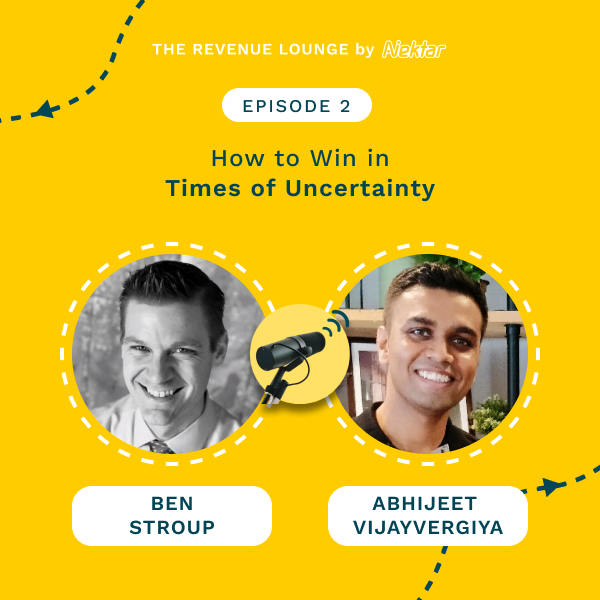
Ep #2: How to Win in Times of Uncertainty
Listen Now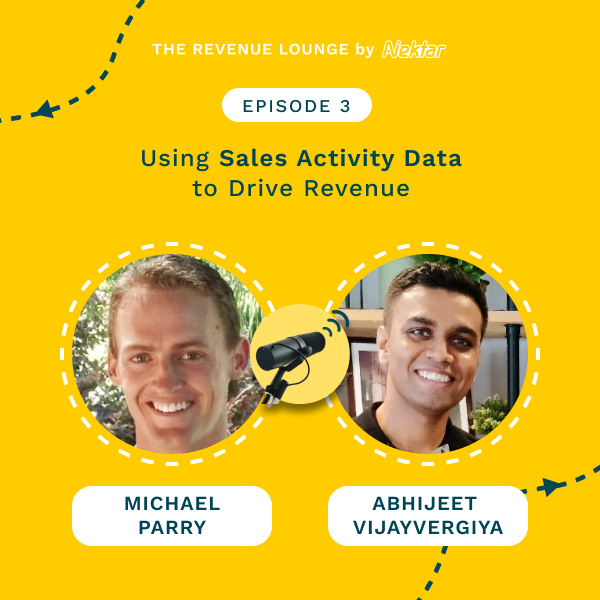
Ep #3: Using Activity Data to Drive Sales Productivity
Listen Now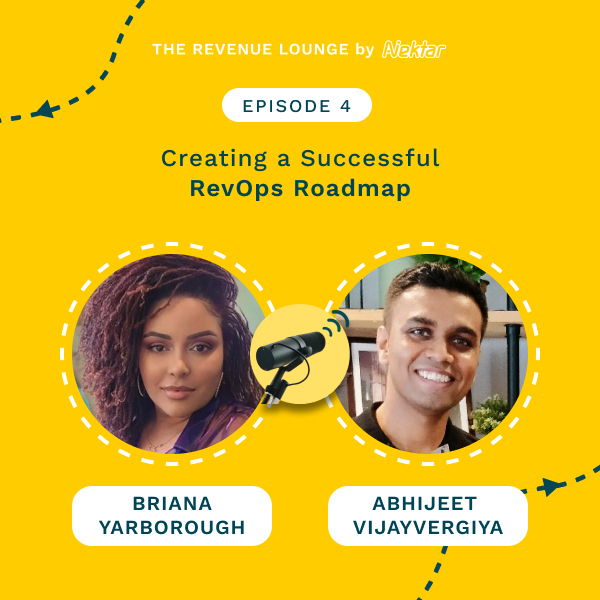
Ep #4: Creating a Successful RevOps Roadmap
Listen Now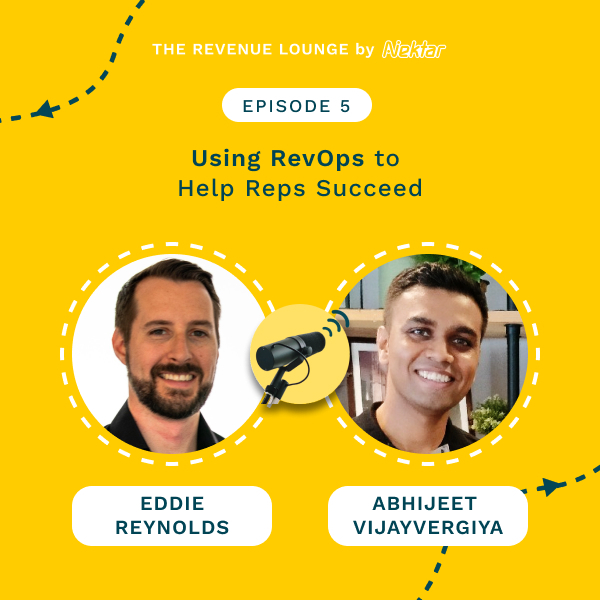
Ep #5: Using RevOps to Help Reps Succeed
Listen Now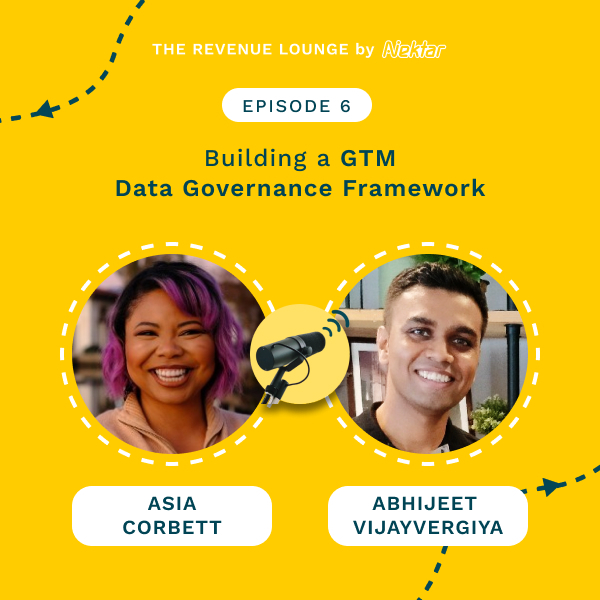
Ep #6: Building a GTM Data Governance Framework
Listen Now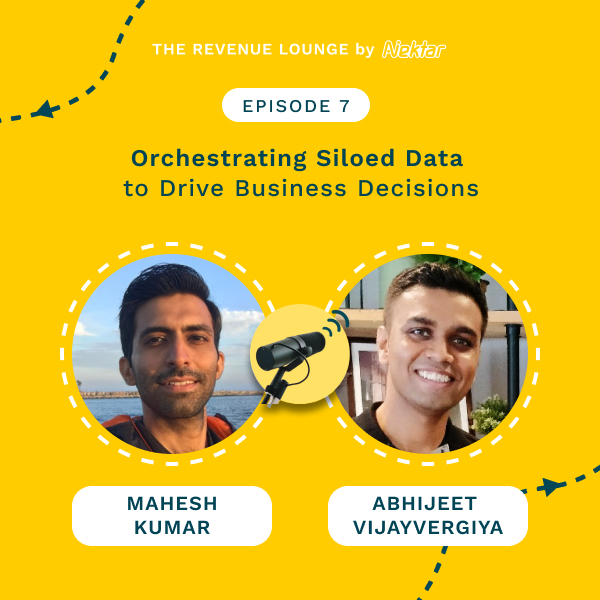
Ep #7: Orchestrating Siloed Data to Drive Business Decisions
Listen Now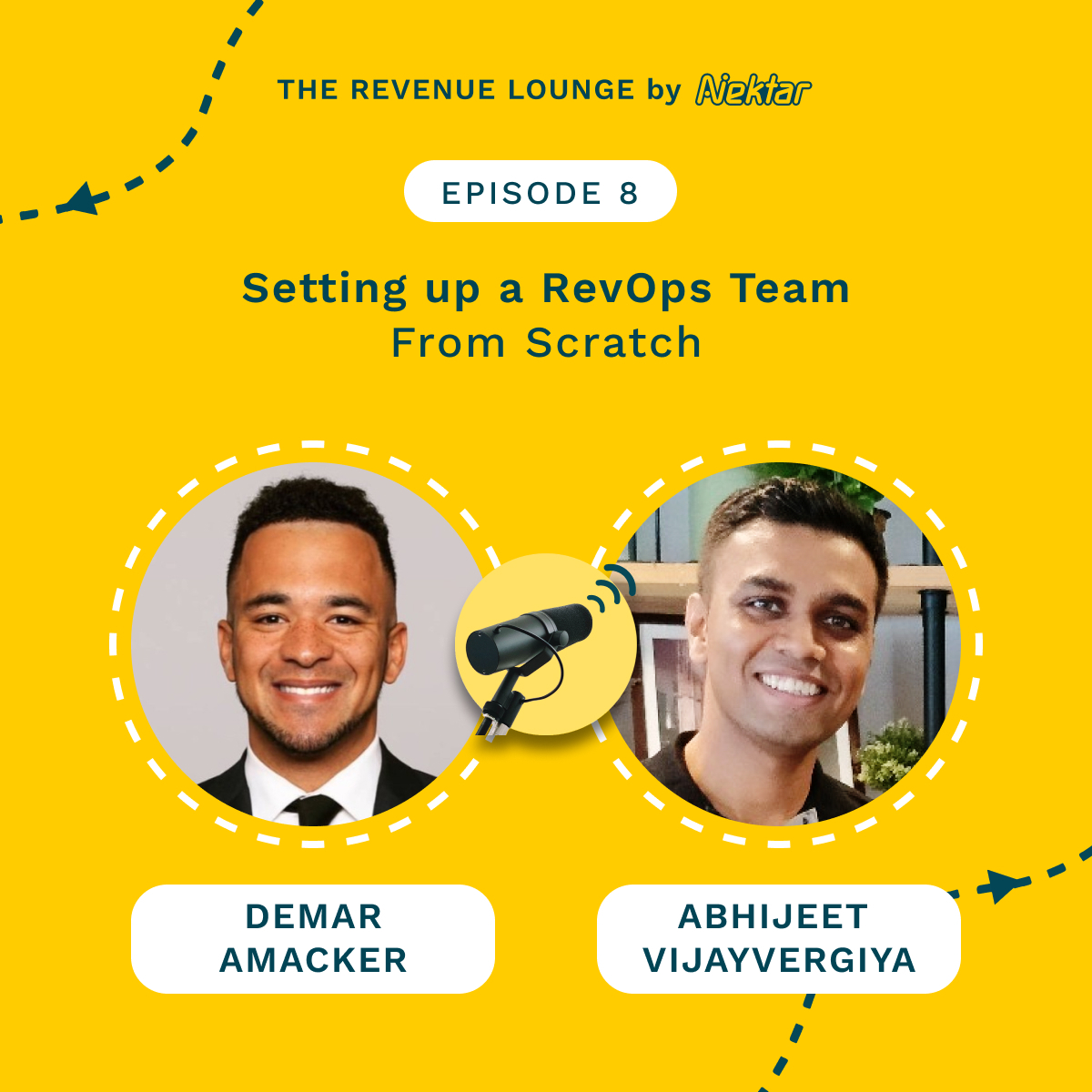
Ep #8: Setting Up a RevOps Team From Scratch
Listen Now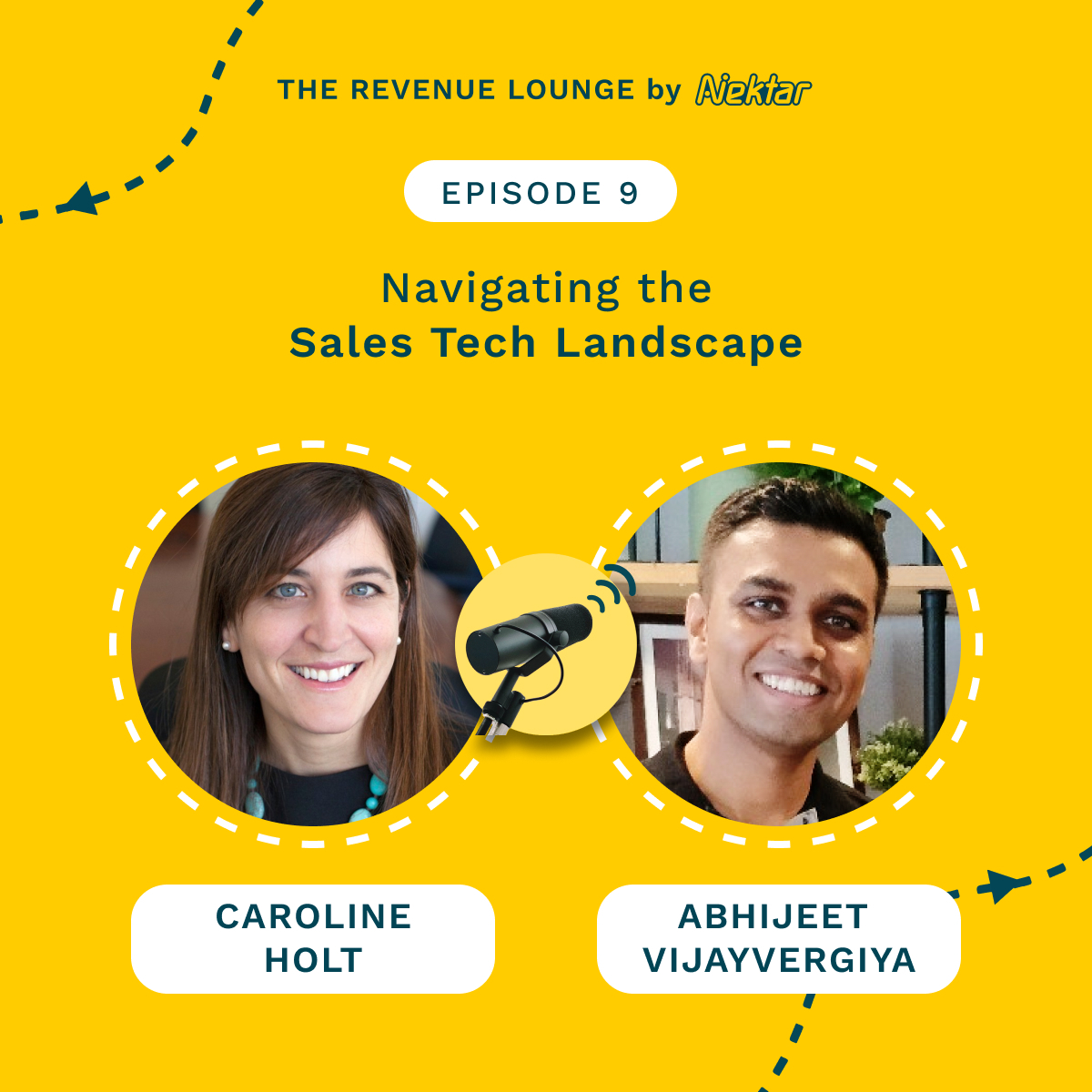
Ep #9: Navigating the Sales Tech Landscape
Listen Now